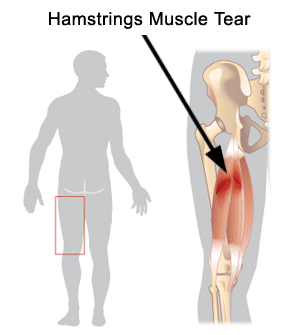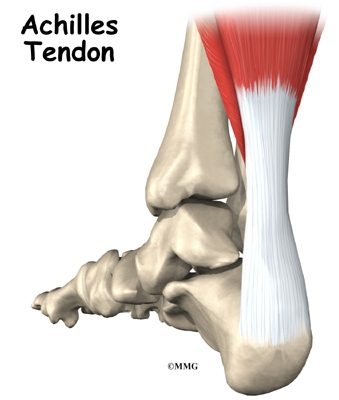
The fear that most people have of runners’ knees—crippling arthritis—is largely unfounded. That doesn’t mean that runners don’t get knee injuries, though. In fact, in one survey of runners, injuries to the knee were more common than injuries to any other body part.
Let’s face it: The knee is one of the most poorly “designed” parts of our body. This tiny little shifting piece of bone acts as the brace between our feet crashing into the ground and almost the entire rest of our body. Add to that the stress of running on asphalt, overpronation, and, for some, being overweight, and it’s a wonder that there aren’t more knee injuries!
The two most common knee injuries for runners are iliotibial band syndrome and, appropriately enough, runner’s knee (what the professionals call chondromalacia patella). The iliotibial band is a thick cord that runs from the pelvis to the outside of the thigh and connects just below the knee. It helps to stabilize your thigh muscles and knee when you run. Usually, you’ll feel pain on the outside of your knee, but you might also feel it along the outside of your hip. The pain can be sporadic from day to day, but it usually comes on after you’ve run a set distance. Bowlegged runners are susceptible to this injury. They should concentrate on regularly stretching the iliotibial band to make sure that it can work through a wide enough range of motion when running. And anyone can get it if they regularly run on uneven surfaces, especially the same side of an overly slanted road.
In the short term, you’re best to limit your mileage to just below the level at which you usually start to feel pain. In the long term, be smart—work on increasing the band’s flexibility, and run on level surfaces. If you have no option but to run on slanted roads, regularly switch directions so that one leg isn’t always made to run as if it were longer. In runner’s knee, repeated stress on the knee causes inflammation and softening of the cartilage under the kneecap. This prevents the kneecap from tracking normally over the end of the thigh bone. You’ll usually feel pain around or behind the kneecap; it might get worse when you climb stairs.
Overpronators are especially susceptible to runner’s knee because the knee has to compensate for the extra inward rotation of the lower leg. Among relatively new runners, weak thigh muscles are often a leading cause of this injury. Your thigh muscles help to align your knee and keep it straight. If they’re not as strong as they should be, they may not be able to help the knee guide itself along its proper course.





 Stress fractures are tiny, incomplete breaks or cracks in a bone. They can occur many places in the body, but runners most often get them in the feet. They’re caused by too much repetitive stress to bones that are overworked. That’s why stress fractures occur gradually—over time, the bones are asked to do just a little bit more than they’re ready for, and the shock is great enough to cause a slight crack. Stress fractures are different from a standard broken bone because with a stress fracture, there’s not a sudden, obvious incident when the bone breaks. Rather, the pain begins gradually, usually as a slight twinge, and only intensifies as you continue to run on it. Trust me, though—if you get a full-blown stress fracture, there will be no mistaking that you’re hurt. With every step, sharp pain will shoot from your foot up your leg, and it will get worse the longer you run on it.
Stress fractures are tiny, incomplete breaks or cracks in a bone. They can occur many places in the body, but runners most often get them in the feet. They’re caused by too much repetitive stress to bones that are overworked. That’s why stress fractures occur gradually—over time, the bones are asked to do just a little bit more than they’re ready for, and the shock is great enough to cause a slight crack. Stress fractures are different from a standard broken bone because with a stress fracture, there’s not a sudden, obvious incident when the bone breaks. Rather, the pain begins gradually, usually as a slight twinge, and only intensifies as you continue to run on it. Trust me, though—if you get a full-blown stress fracture, there will be no mistaking that you’re hurt. With every step, sharp pain will shoot from your foot up your leg, and it will get worse the longer you run on it. Most toe problems you’re going to get as a runner are cosmetic rather than serious. The most frequent visitors will be black toenails, which are so linked with the sport that the condition is also known as runner’s toe. Runner’s toe happens when the nail is either pressed down too much on the bed that underlies it or the nail separates from the bed. In either case, blood pools between the nail and the bed. Eventually, the nail turns black. When this condition is caused by the nail being pressed into the bed, it’s almost never painful. The nail gets very hard, and it looks like hell, but it won’t bother you. After a few months, the nail will grow out or fall off. In the meantime, you’ve got yourself a nice little memento from your miles that will instantly identify you as a runner to any knowledgeable person who happens to see your feet. Sometimes, the nail loosens rather than hardens, and this is usually uncomfortable. New runners whose toenails aren’t used to much wear and tear will get these more than longtime runners.
Most toe problems you’re going to get as a runner are cosmetic rather than serious. The most frequent visitors will be black toenails, which are so linked with the sport that the condition is also known as runner’s toe. Runner’s toe happens when the nail is either pressed down too much on the bed that underlies it or the nail separates from the bed. In either case, blood pools between the nail and the bed. Eventually, the nail turns black. When this condition is caused by the nail being pressed into the bed, it’s almost never painful. The nail gets very hard, and it looks like hell, but it won’t bother you. After a few months, the nail will grow out or fall off. In the meantime, you’ve got yourself a nice little memento from your miles that will instantly identify you as a runner to any knowledgeable person who happens to see your feet. Sometimes, the nail loosens rather than hardens, and this is usually uncomfortable. New runners whose toenails aren’t used to much wear and tear will get these more than longtime runners. Ice should always be your first line of defense against injury. If I notice the slightest little ache, I like to ice it after my run and a couple of other times during the day, too, if possible. A few minutes of preventative care can work wonders in keeping a little nagging pain from developing into a disruptive injury.
Ice should always be your first line of defense against injury. If I notice the slightest little ache, I like to ice it after my run and a couple of other times during the day, too, if possible. A few minutes of preventative care can work wonders in keeping a little nagging pain from developing into a disruptive injury.